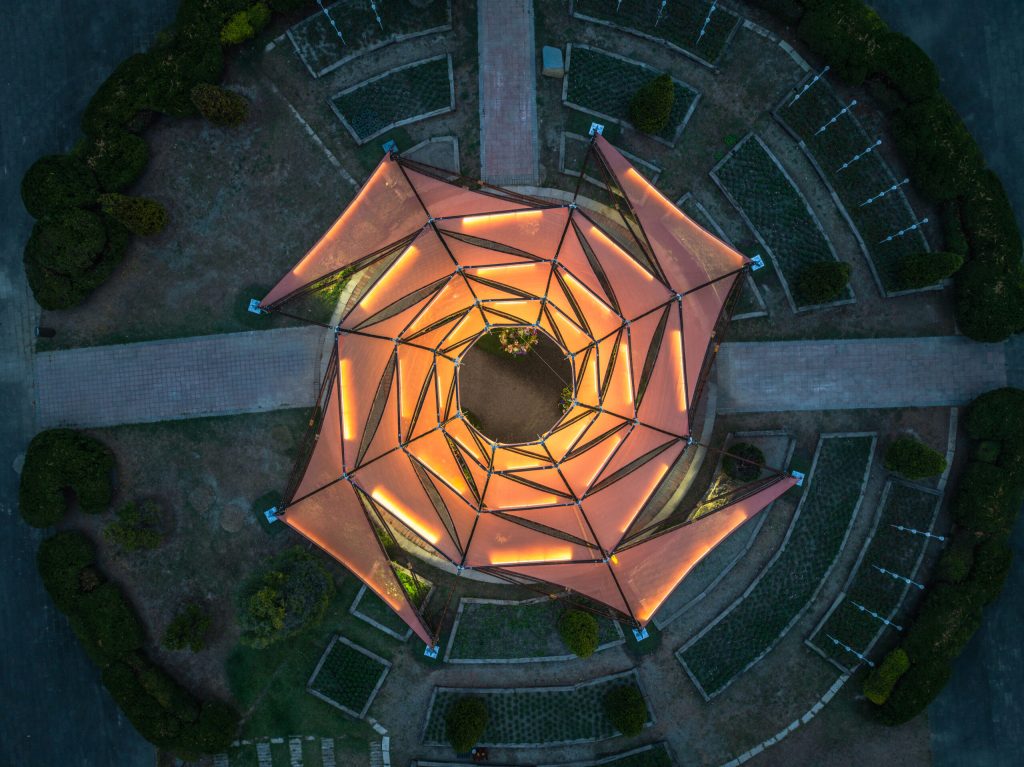Architizer’s Vision Awards are back! The global awards program honors the world’s best architectural concepts, ideas and imagery. Preregistration is now open — click here to receive program updates.
To design a building is typically to design for function, and a structure is often a solution. Yet, every now and then, we come across a building that has wriggled free of purpose altogether. It is too small to occupy, odd to ignore, or deliberate to be dismissed as a work of art. Commonly, these forms are follies.
Follies first emerged in 18th-century Europe, mostly in gardens owned by wealthy people with elaborate titles and questionable taste. Built to look like crumbling towers, classical temples, or pastoral ruins, follies had no real use other than to decorate the landscape or give guests something to walk towards. They were expensive jokes, architectural one-liners, and metaphors that were often expressions of grief or ego. Never utility. The name stuck because it fit, to design and build a folly was indeed a folly of an undertaking.
Today, they’re back. Or at least something like them is. Architects and artists are once again building structures that don’t do much in the traditional sense. Some are installations, some are pavilions. You’ll find them tucked into sculpture parks, floating on lakes, hidden in woodland, or standing stubbornly in public squares. Occasionally, they offer shelter or act as decoration. A few endeavor to educate. Many are content to simply be objects. But each one earns its place through character rather than purpose by provoking, surprising, or simply refusing to explain itself to the likes of you and me.
This collection gathers recent projects that pick up where the folly left off. Each asks the same question in its own way: What if architecture didn’t need a reason to make sense and was just an idea made oddly, beautifully visible?
IKAL
By Cabrera Arqs / Enrique Cabrera Arquitecto, Chicxulub Pueblo, Mexico

Photos by Enrique Cabrera
IKAL doesn’t house much, but it holds a mood. This circular structure, cast in chukum and open to the stars, sits contentedly in the Yucatán landscape. A simple cosmic observatory without a telescope. From above, it resembles a crater or a sacred mark; from within, it’s more chapel than much else. There’s no signage and no explanation. But a slice of sky and a feeling that something larger might be at play is all it needs. Whether it’s architecture or ritual theatre is beside the point. As a folly, it’s perfect: form without function, but heavy with meaning.
Folly Kometenplein
By bureau SLA, Hoofddorp, Netherlands
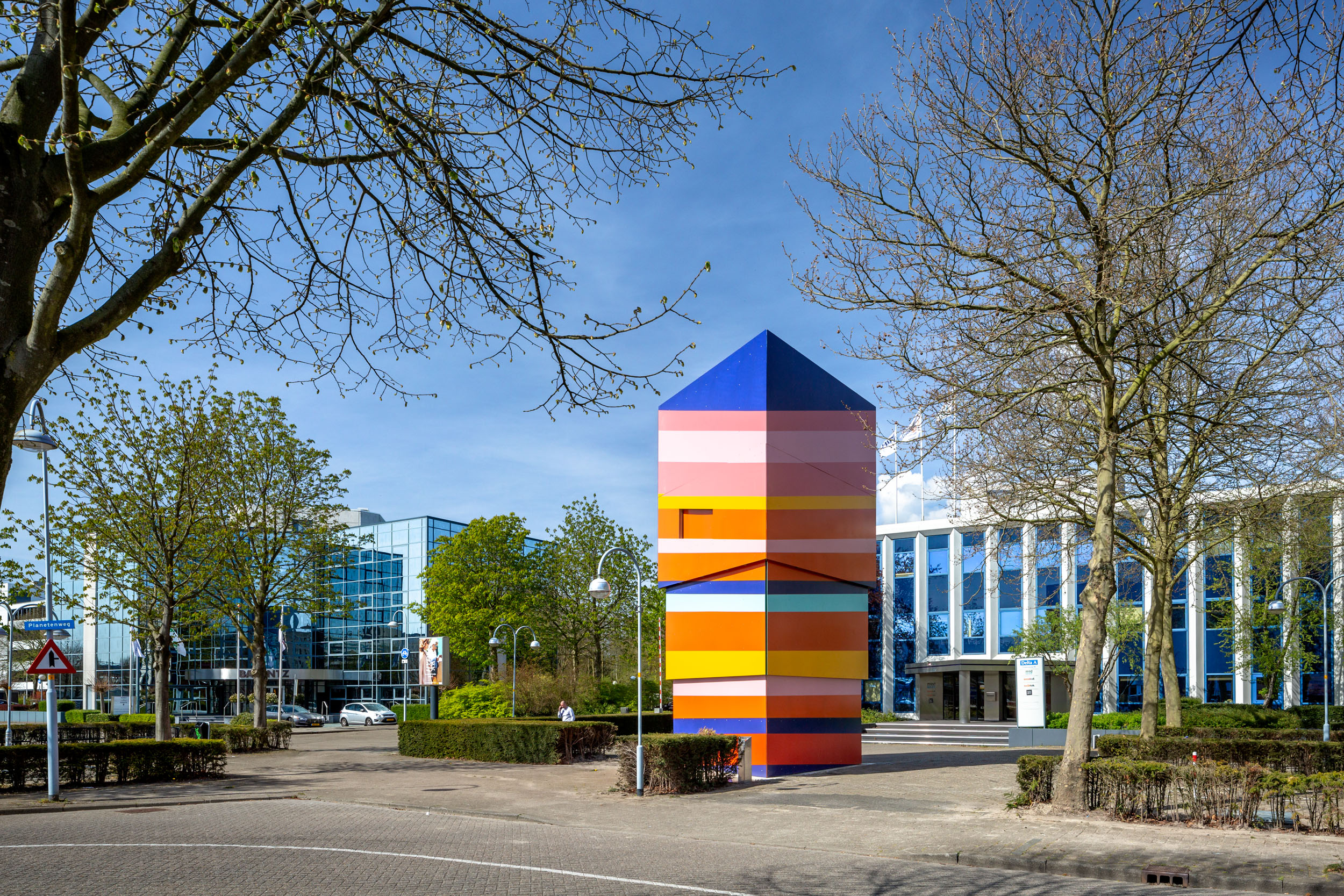
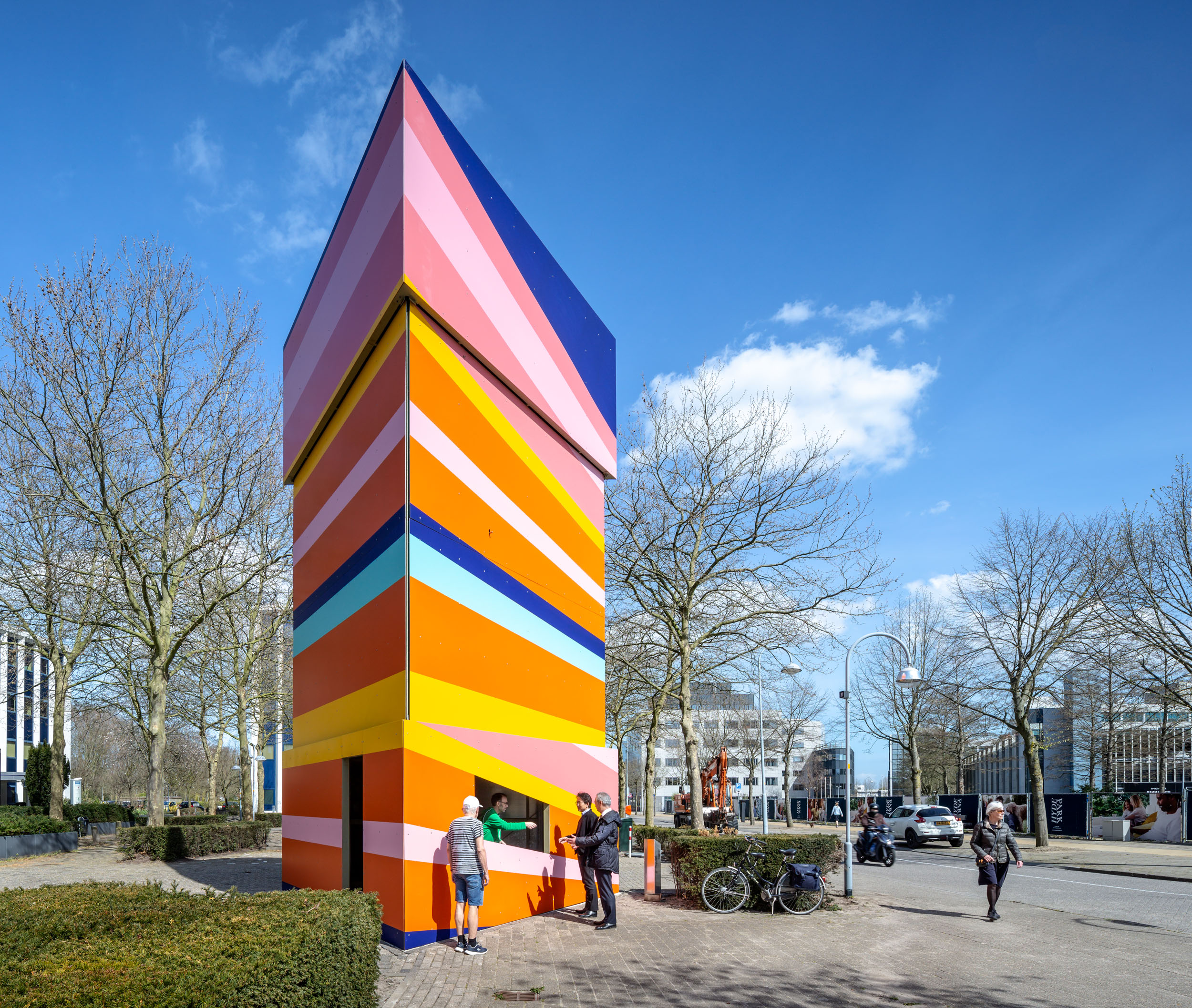
Photos by Thijs Wolzak
It looks like it might unfold, fly away or implode — but for now, it sits cheerfully in a Dutch square, waiting for a food truck or a passing stranger to give it something to do. This bright triangular structure, part pavilion, part transformer, can be opened or closed depending on its mood (or at least on its configuration). There’s a bar counter six meters in the air that descends when needed. Two sides shift, others stay still. It’s temporary, moveable and slightly absurd. A modern folly, then, with decent hydraulics.
Katenara
By Building Simplexity Laboratory (BSL), The University of Hong Kong, Taichung, Taiwan
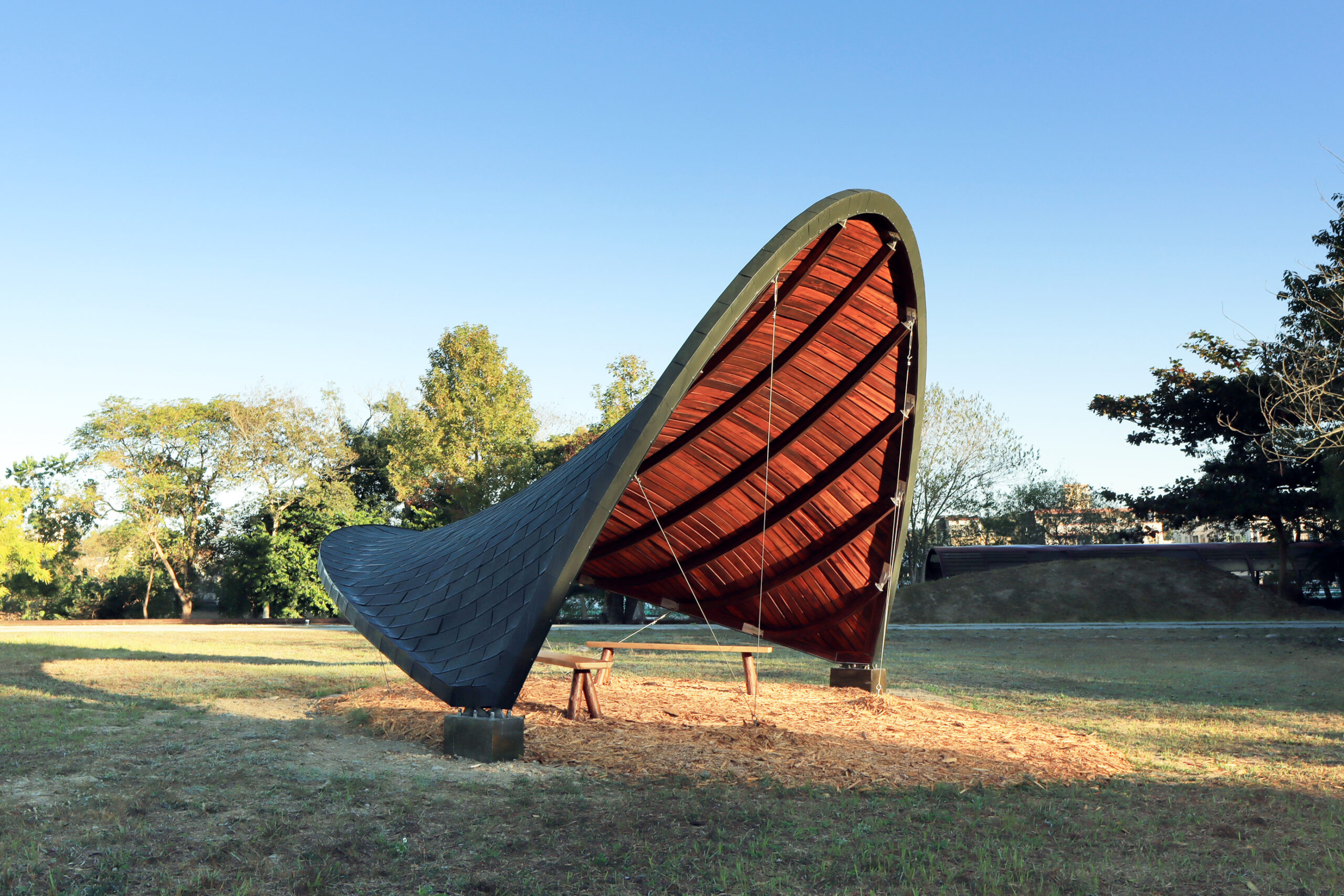
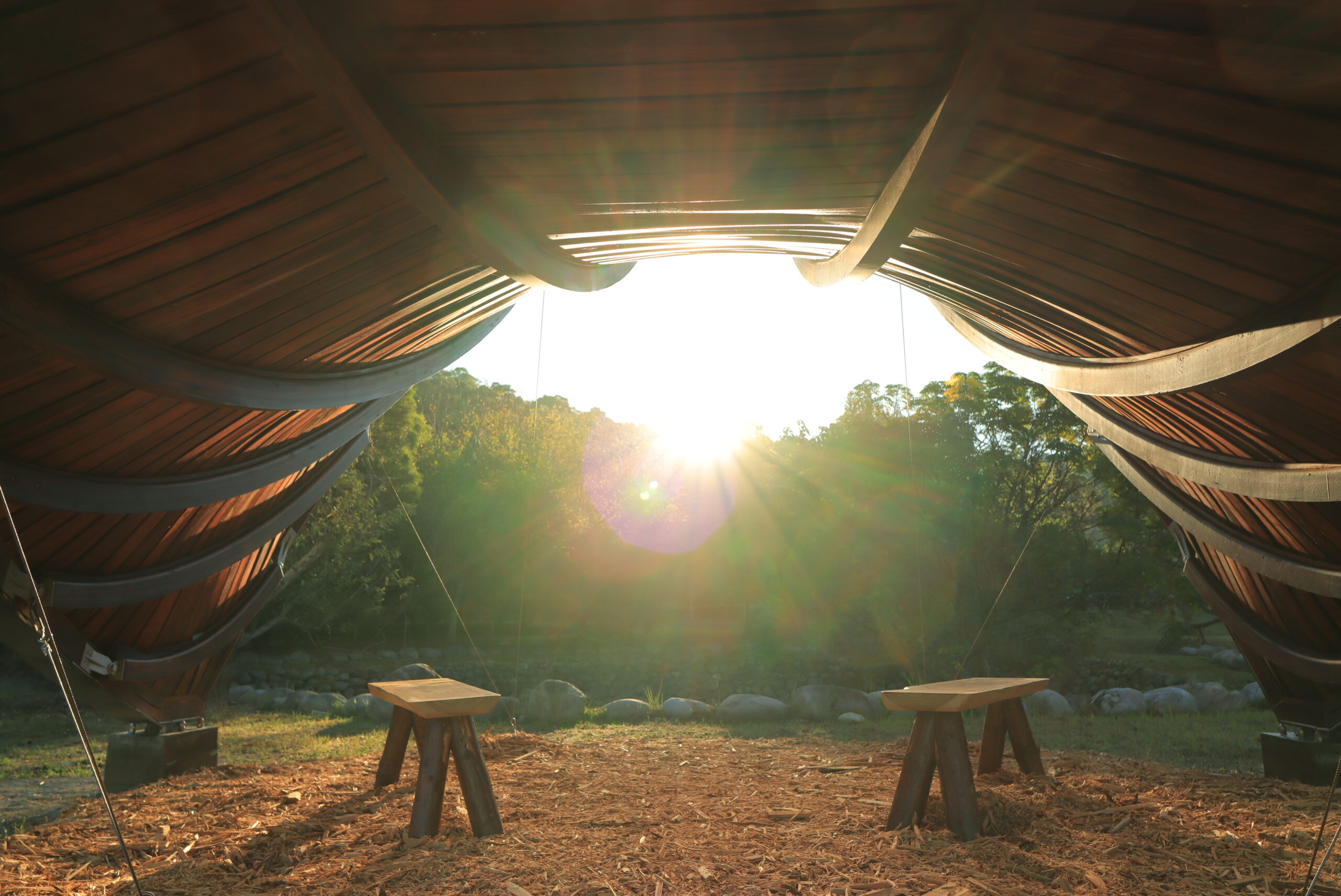 If you were to sketch a catenary curve on a napkin and then build it using nothing but glulam, tension cables and parametric software, you’d end up somewhere near Katenara. Suspended in a forest park, this pavilion is part shelter, part algorithm, a timber swoop that demonstrates how low-tech and high-design can intersect. It’s not particularly useful — though it does keep rain off your head — but as an elegant experiment in form-making, it’s a reminder that architectural play need not require a brief, only curiosity.
If you were to sketch a catenary curve on a napkin and then build it using nothing but glulam, tension cables and parametric software, you’d end up somewhere near Katenara. Suspended in a forest park, this pavilion is part shelter, part algorithm, a timber swoop that demonstrates how low-tech and high-design can intersect. It’s not particularly useful — though it does keep rain off your head — but as an elegant experiment in form-making, it’s a reminder that architectural play need not require a brief, only curiosity.
Songyi Theater
By Kong Xiangwei Studio, Shandong, China

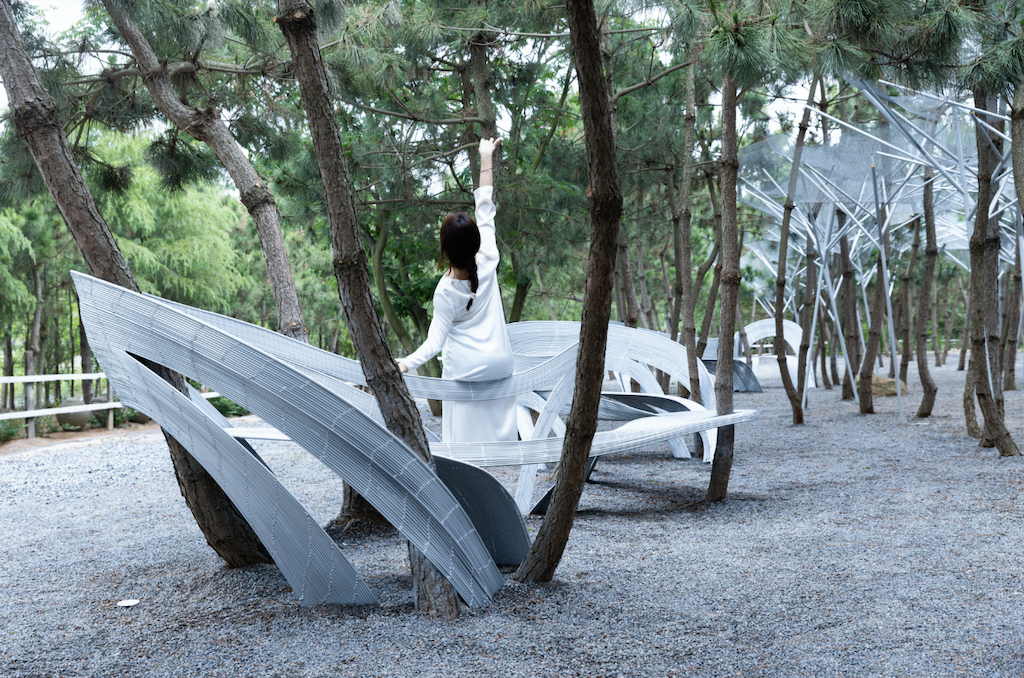
Photos by Archi Translator
In a pine forest earmarked for clearing, a handful of silver ‘trees’ now rise instead. Songyi Theater is as much a stage as a sculpture garden. It’s highly theatrical, enchantingly reflective, and intentionally ambiguous. Its mirrored trunks catch the sun while its sinuous seating curls through the undergrowth. Visitors wander, perform, or do nothing at all. It invites pause more than applause. The designer reportedly worked on-site without drawings, shaping the folly through direct conversation with the land. Which is possibly the most poetic kind of indulgence.
Living Knitwork Pavilion
By Wicaksono & Co, Nevada
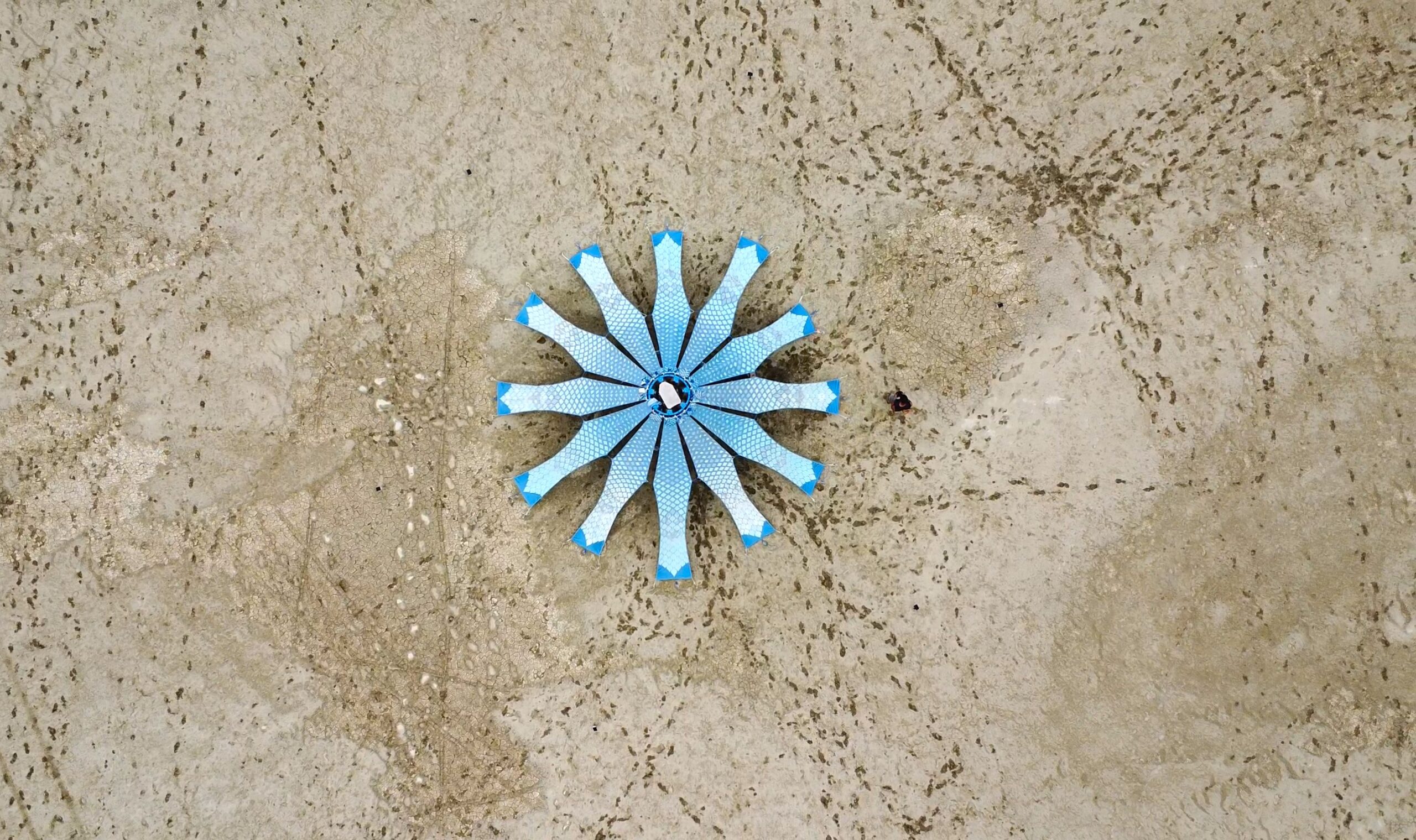

Photos by Irmandy Wicaksono
Built for Burning Man (folly heaven) and powered by solar panels and theremin-like sensors, Living Knitwork is half spacecraft, half soft sculpture. Woven from conductive yarns and shaped like a techno-dodecahedron, it hums quietly when you get too close, lights up when you move, and tells stories through embedded textiles. No one asked for an interactive knitted folly with real-time spatial audio, but here it is anyway. Part shade structure, part glowing oddity, wholly unnecessary and utterly captivating.
Louis Vuitton – Pavilion Nomad
By MARC FORNES / THEVERYMANY, Milan, Italy
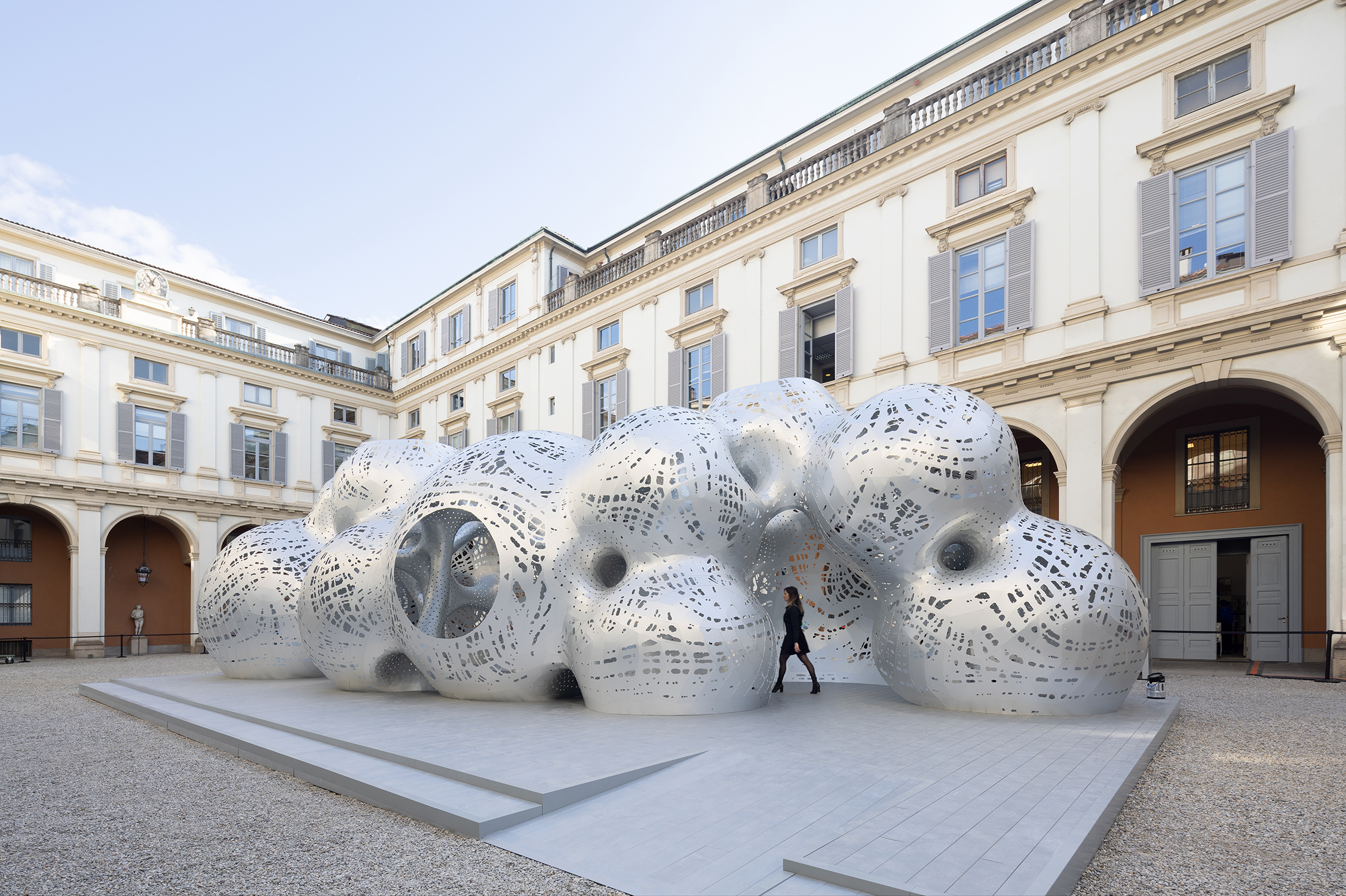

Photos by naaro
It landed at Milan Design Week like a metallic squid. Nomad is a traveling pavilion, made from thousands of riveted aluminium parts that shimmer like mercury and weigh next to nothing. Its rounded geometry hides the precise engineering; its globular form contains no straight lines, only curves and voids. It references the palazzo that surrounds it but belongs to nowhere in particular. It’s light, portable, unplaceable and all the better for it. Architecture that goes wherever it pleases? That’s a folly in motion.
Flourish Bamboo Dome
By Studio A-light, Taiwan
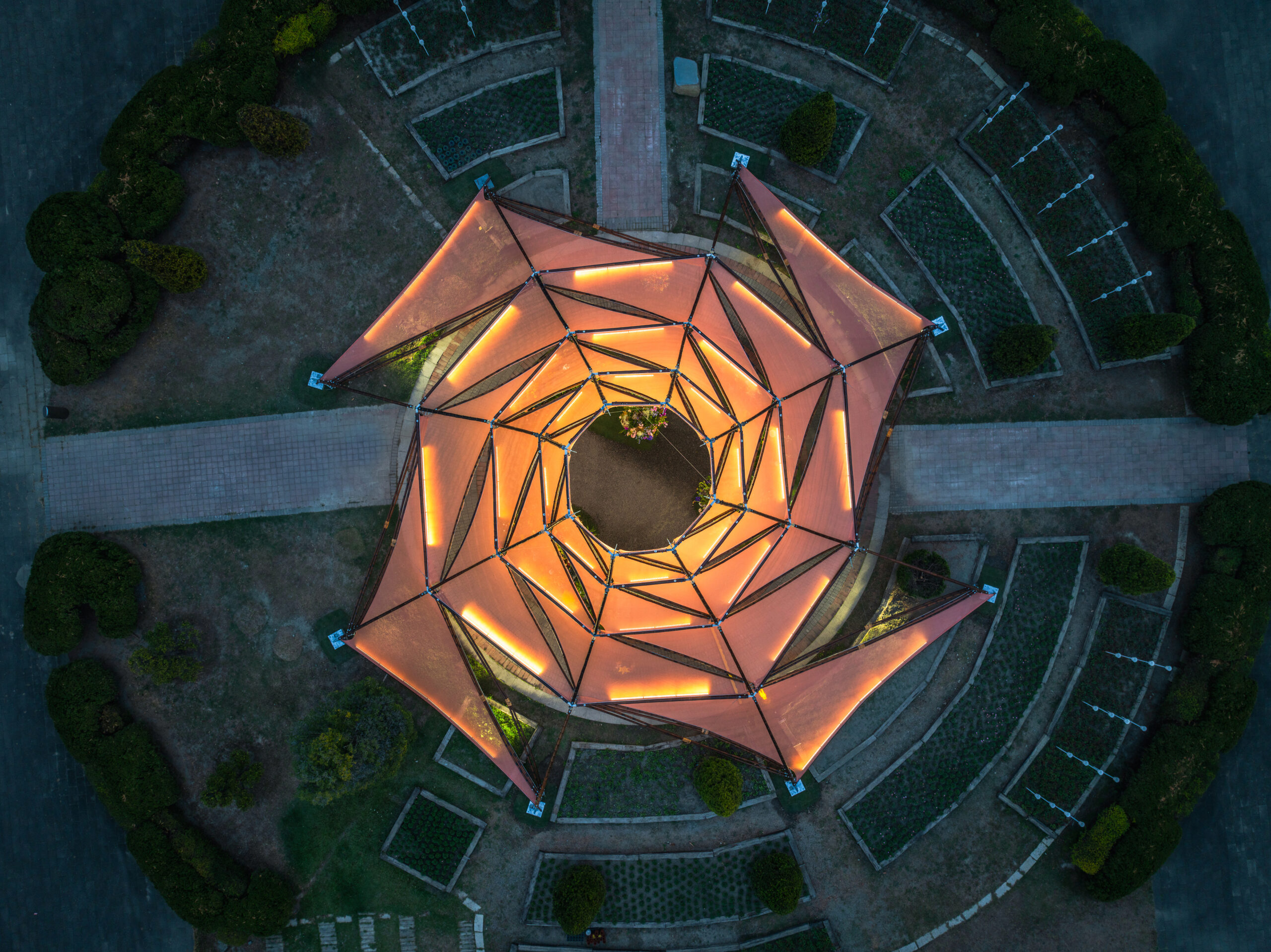
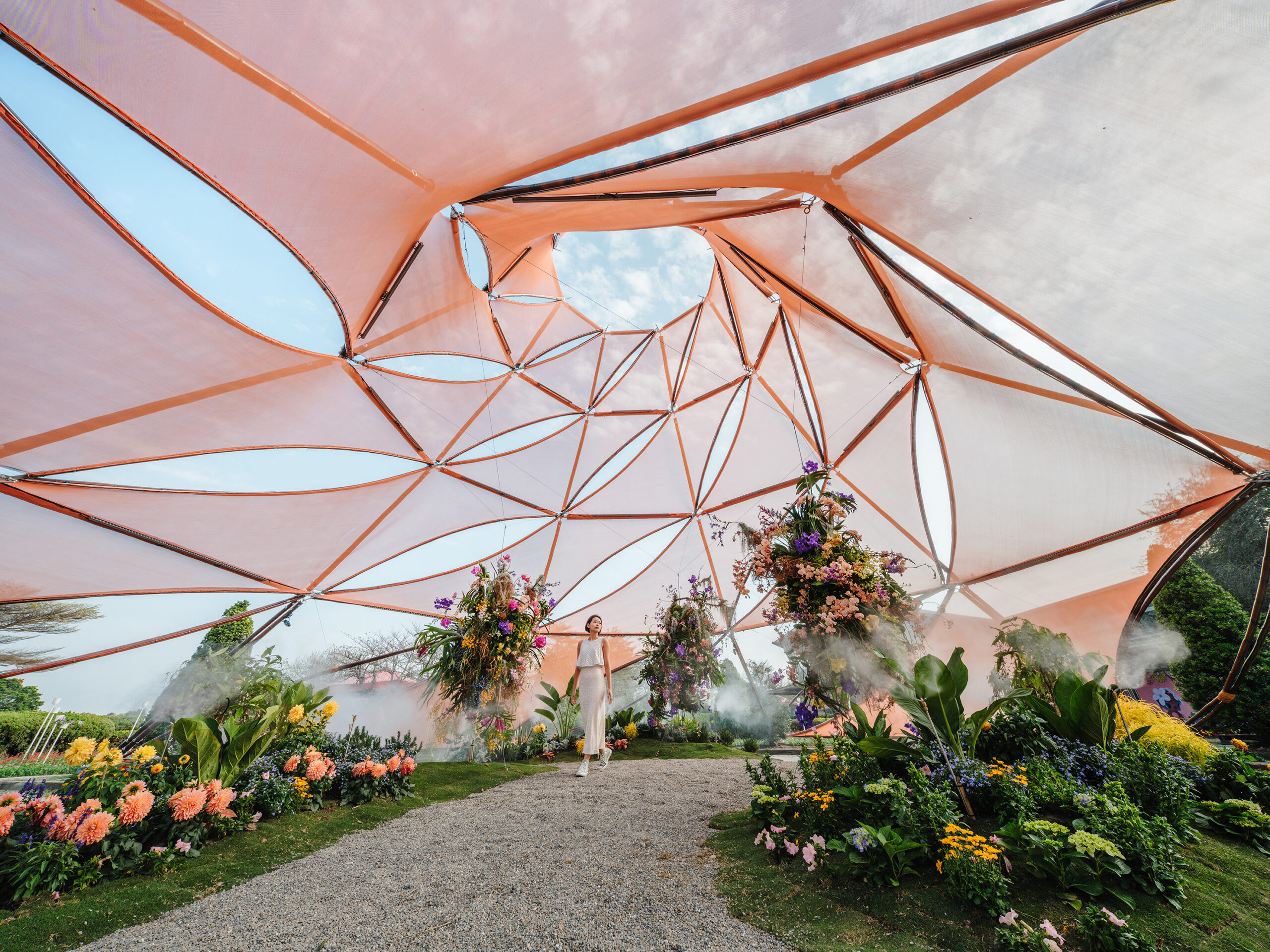
Photos by Fixer Photographic Studio
There are flowers, misting systems, and suspended planters, but the real flourish in Flourish is structural. This bamboo dome in rural Taiwan reimagines the idea of a greenhouse, becoming a floating spring spiral, using heat-treated Makino bamboo to create soaring arches and delicate curves. It’s anchored with floral islands and clad in agricultural mesh, yet it feels closer to a cathedral than a farm shed. As a folly, it’s unusually practical, but its exuberance, scale and sheer agricultural theatre make it a worthy outlier.
Concrete Pavilion
By LIN Architecture, China

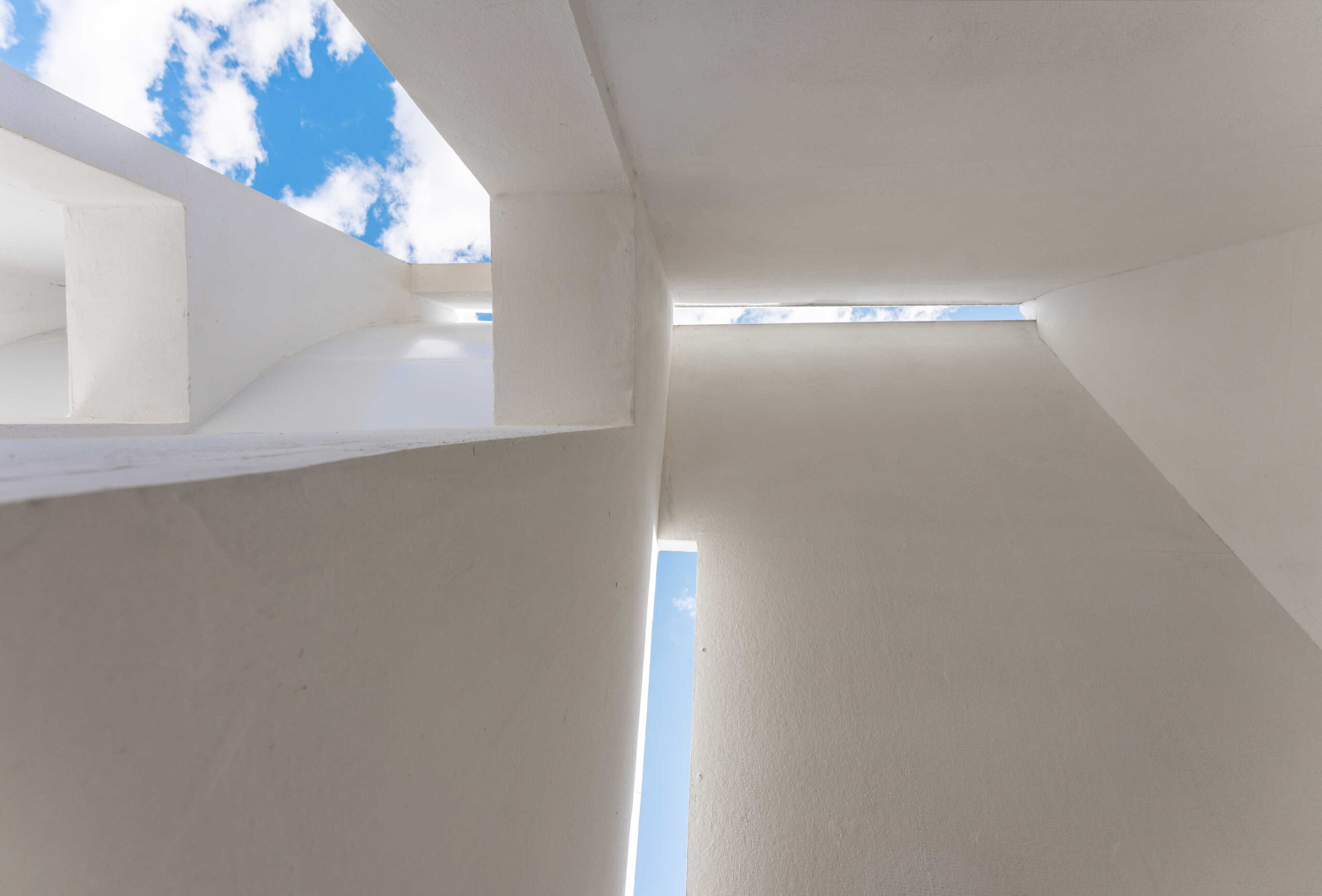
Photos by Chen Zhitong and Zhuo Hongduo
This concrete object looks like it might once have been useful. Maybe a chapel? A pumping station? A monument? No one seems entirely sure, which only adds to its charm. LIN Architecture’s composition of angled roofs, fractured windows, skewed platforms and half-arches creates a building that feels both ancient and improvised, maybe even otherworldly. The interior is fragmented, lit by unexpected slits and skylights. It’s too serious to be a playground and too strange to be symbolic. It doesn’t explain itself, and that, of course, is entirely the point.
Architizer’s Vision Awards are back! The global awards program honors the world’s best architectural concepts, ideas and imagery. Preregistration is now open — click here to receive program updates.

